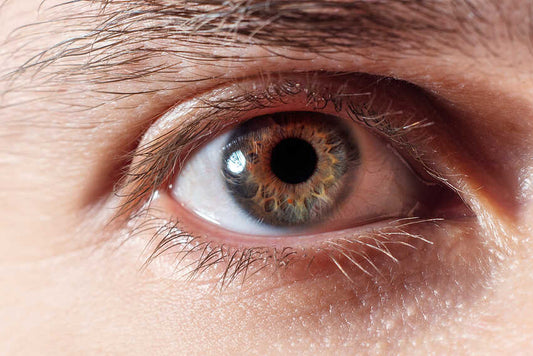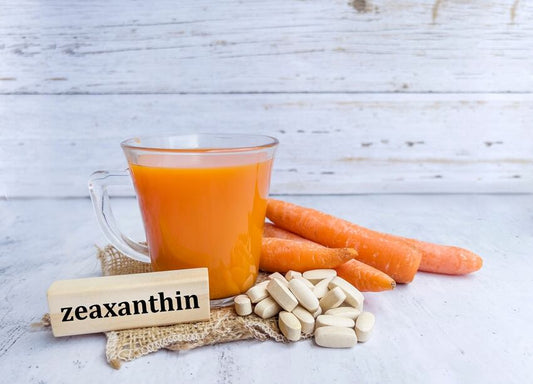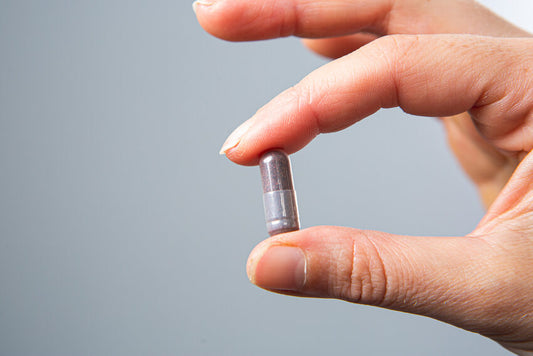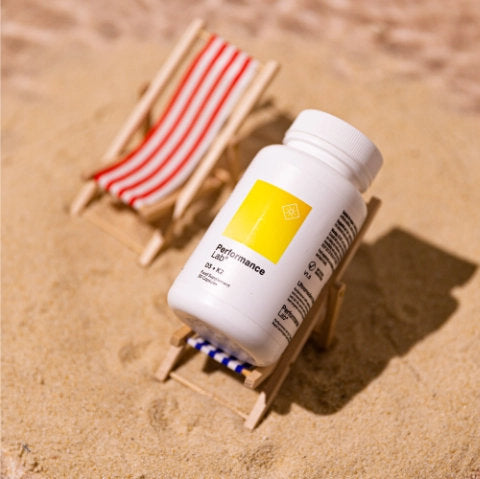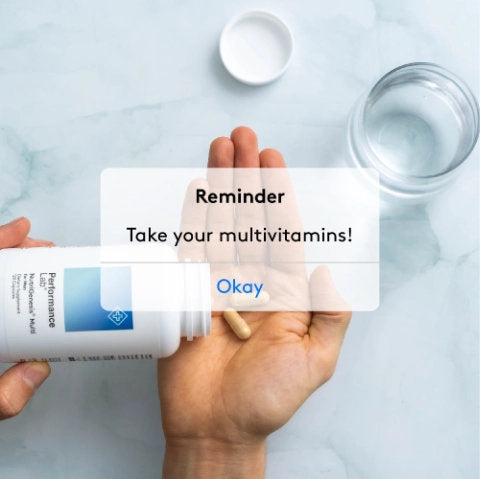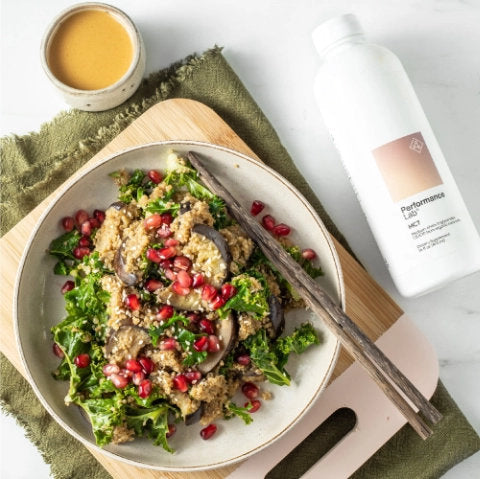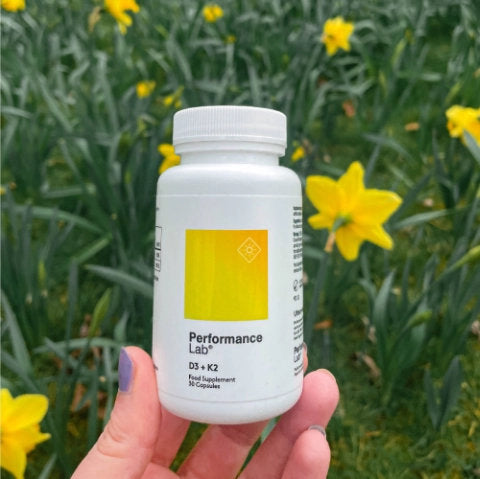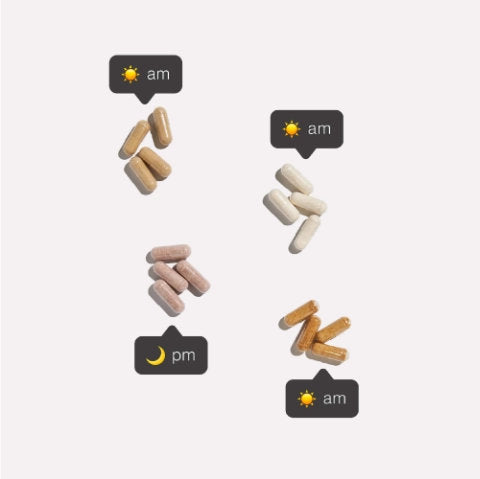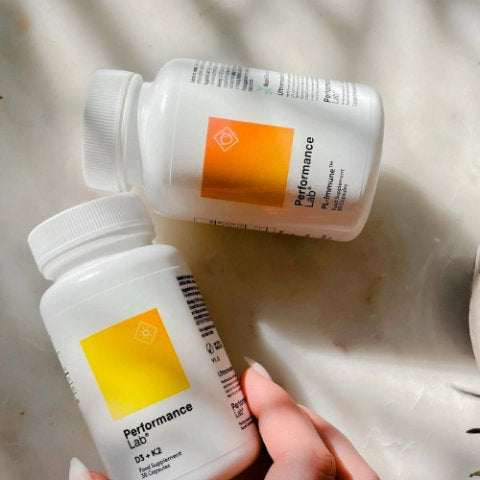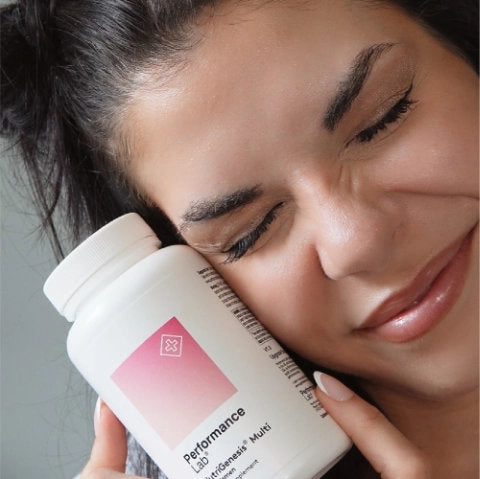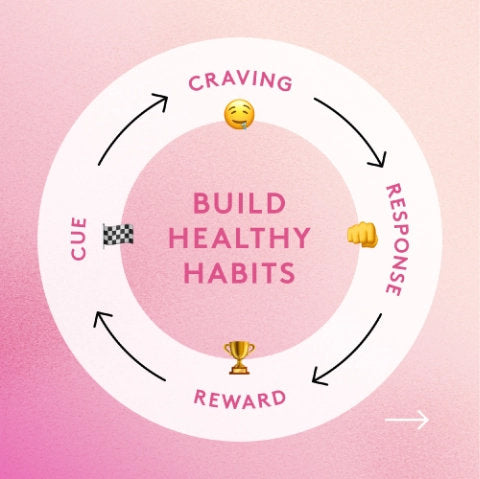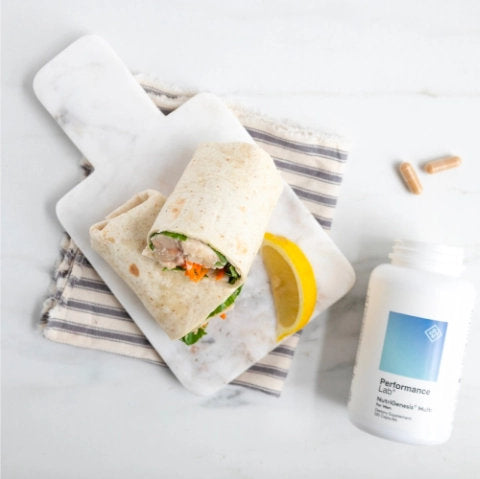Let's be real for a second. When you think about eating for your health, what's the first thing you think about?
Your heart, brain, skin, maybe your nervous system—they're the most common ones.
But what about your eyes?
As one of your five senses, vision is an integral part of perception and how we experience the world around us, but also an important part of your physical fitness.
Poor eyesight is often attributed to the rise in the use of mobile phones, laptops, and other devices that we're attached to 24/7.
Still, poor eyesight can also develop from deterioration of eye health, with malnutrition being a huge factor that can impact eye health and vision both in the short- and long-term.
To avoid that, focus on consuming a diet rich in colour and variety. Many vitamins and minerals needed to support vision and eye health are found in common foods you eat every day, especially brightly colored fruits and vegetables.
This article will give you a rundown of the top vitamins from fruits you need to support healthy eyes, why they're important, and where you can find them. We will then tell you why we recommend using a top vision supplement to proote optimal eye health and visual acuity over the long-term.
Best Vitamins For Eye Health Found In Fruit
#1 Vitamin C & E
Both vitamin C and E function as powerful antioxidants in the body that may protect your eyes against damage caused by free-radicals (reactive oxygen species, ROS).
If you aren't entirely sure what free radicals are, they any molecular species that contains an unpaired electron in an atomic orbital, making it unstable and highly reactive.
Due to their highly volatile nature, these highly reactive species can damage biologically relevant molecules such as DNA, proteins, carbohydrates, and lipids. They attack and cause cell damage and homeostatic disruption.
Many eye conditions have been linked to increased oxidative stress levels, which is a state whereby there is an imbalance between the number of available antioxidants and free radicals floating around your body 1, 2.
Low antioxidant status means there are too few molecules to neutralize the radicals and prevent damage. As such, a disease state ensues.
One study sought to determine the effect of high-dose vitamin C and E, beta carotene, and zinc supplements on age-related macular degeneration (AMD) progression and visual acuity 3.
Researchers found that supplementing 400IU of vitamin E, along with other nutrients including vitamin C, reduced the risk of progressing to advanced-stage AMD by a whopping 25%.
But it's not just this.
Vitamin C is also an important component of collagen synthesis, a protein that provides structure to the eyes, especially the cornea and sclera 3.
One observational study showed that daily intake of vitamin C greater than 490mg reduced the risk of developing cataracts by up to 75% 4.
Where to find it: Vitamin E is widely available lots of fruits, including avocado, mango, kiwi, and blackberries. It is also found in loads of veggies including sweet potato, squash, broccoli, and leafy greens.
Vitamin C, on the other hand, is found in many of the same sources as vitamin E, specifically citrus fruits (grapefruit, orange, lemon, lime), strawberries, blackcurrants, kiwi, mango, papaya, berries, pineapple, and watermelon.
#2 Beta-carotene (Vitamin A)
Vitamin A is one of the most notable vitamins for eye health due to its role in night vision. Specifically, it supports proper function of the conjunctival membranes and cornea, the outside covering of the eye.
It's important because vitamin A is a component of rhodopsin, the pigment that absorbs light in the retinal receptors and enables low-light vision (i.e. night vision) 5.
But there are two forms of vitamin A available: preformed vitamin A (retinol and retinyl ester), and provitamin A carotenoids, beta-carotene among the most well-known. These plant pigments are then converted into vitamin A.
Both provitamin A and preformed vitamin A require intracellular metabolization to retinal and retinoic acid, the active forms of vitamin A, in order to be utilized for specific biological functions 6.
However, be mindful that beta-carotene's absorption rate from plant sources ranges anywhere from 5% to 65%.
The vitamin A equivalency ratio for β-carotene to vitamin A is estimated to be around 12:1 7, so ensure you're consuming enough. Alternatively, opt to consume provitamin A-rich foods alongside beta-carotene rich foods.
Where to find it: Preformed vitamin A is found primarily in animal-based foods, but beta-carotene is highly concentrated in orange vegetables like pumpkin, sweet potato, carrots, and winter squash. Carotenoids are also concentrated in orange fruits like melon, papaya, mango, apricots, and oranges.
#3 The B Vitamins
Vitamins B6, B9 (folate), and B12 aren't generally ones you'd associated with eye health, but they have critical indirect roles in maintaining proper vision.
These three vitamins are critical to regulating homocysteine levels, an amino acid that in high amounts can wreak havoc on your health. Elevated homocysteine may be associated with increased inflammation and an increased risk of developing AMD 8.
Adequate levels of these vitamins are needed during the conversion process of homocysteine to cysteine and/or methionine.
One study found that 1,000 mcg of B12, along with B6 and folate, reduced the risk of developing AMD by up to 34% 9.
Riboflavin, also known as vitamin B2, and niacin, vitamin B3, are equally as important because of their role as potent antioxidants that may protect against the formation of cataracts from excessive free-radical damage 10.
And niacin also plays a role in preventing glaucoma, a condition whereby the optic nerve of the eye becomes damaged 11.
Where to find it: Bananas, papaya, oranges, and cantaloupe are excellent sources of B6; citrus fruits like grapefruit, oranges, lemons, and limes for B9 (folate); and avocado for both riboflavin and niacin. Keep in mind that B12 can only be obtained naturally through animal products, so supplementation is highly recommended for anyone following a 100% plant-based diet.
Bonus Nutrients From Fruits
Although not technically vitamins, two more key nutrients need to be discussed in relation to eye health and foods: antioxidants and omega-3 fatty acids.
Antioxidants
Antioxidants are a group of compounds that help to neutralize free radicals by donating one of their electrons to increase stability.
Research indicates that antioxidant supplements and compounds like lutein and zeaxanthin are beneficial to retard AMD. Some studies also suggest that a diet high in antioxidant-rich fruits and vegetables may help protect against other eye conditions like glaucoma 12.
Two antioxidants specifically, lutein and zeaxanthin, are plant pigments that give fruits and vegetables a yellow to red hue. They are the only two dietary carotenoids that accumulate in the eye and are concentrated in the macula, thus they are known as macular pigments 13.
And interestingly enough, lutein and zeaxanthin are also natural sun blockers that act by absorbing excess light energy, therefore helping to protect your eyes from harmful blue light emitted by both the sun and electronic devices 14.
One study found that over two years, participants taking supplements containing 15mg of lutein three times per week saw improvements in their vision 15. Doses of up to 20mg daily appear to be safe and well-tolerated.
Where to find it: Any fruits and vegetables exhibiting a yellow/orange/red hue likely contain lutein and zeaxanthin, with amounts concentrated more so in veggies. That includes carrots, corn, red, yellow, or orange peppers, and cantaloupe, but also Brussel sprouts, chard, spinach, sweet potatoes, and winter squash.
Omega-3 Fatty Acids
EFAs are a group of three polyunsaturated fatty acids known as EPA, DHA, and ALA. While EPA and ALA have important functions in the body, it's DHA that we're going to focus on here, as it's found in high concentrations in the retina of the eyes.
Research suggests that omega-3 polyunsaturated fatty acids could play a protective role in reducing the onset and development of retinal diseases.
The high concentration of DHA in the retina helps to optimize the fluidity of photoreceptor membranes, retinal integrity, and visual function 16. DHA plays both a structural and functional role in the retina, but also helps to reduce inflammation that may contribute to disease development.
There's also evidence to suggest that omega-3 fatty acids are beneficial to prevent dry eye disease by increasing tear production. Lack of tear can cause dryness, discomfort, and blurry vision 16, 17.
Where to find it: EPA and DHA are primarily derived from cold-water fatty fish, and although not found in plant-based products, Performance Lab® Omega 3 supplies high potency EPA and DHA in a clean, safe, ultraclean prebiotic capsule free of contamination, heavy metals, PCBs, or other toxic compounds. It's an environmentally friendly and sustainable choice, completely vegan, and traceable from start to finish.

The Best Eye Supplements
Besides eating a diet rich in colorful fruits and veggies, supplementing to ensure you cover your bases is also a good idea.
Performance Lab® Vision promotes eye health and vision performance for everybody—enhancing focus speed, motion detection, night vision, and more through a blend of seven powerful ingredients.
With lutein and zeaxanthin plus purified extracts of bilberry, blackcurrant, and saffron, Vision uniquely supports both dynamic eyesight and long-range eye health.

Vision is delivered in prebiotic-infused, vegan-friendly NutriCaps® made from pullulan (fermented tapioca) for easy digestion and complete absorption.
References
- A Taylor, T Nowell. Oxidative stress and antioxidant function in relation to risk for cataract. Adv Pharmacol. 1997; 38: 515-536.
- DL Williams. Oxidative stress and the eye. Vet Clin North Am Small Anim Pract. 2008; 38(1): 179-vii.
- Age-Related Eye Disease Study Research Group. A randomized, placebo-controlled, clinical trial of high-dose supplementation with vitamins C and E, beta carotene, and zinc for age-related macular degeneration and vision loss: AREDS report no. 8 . Arch Ophthalmol. 2001; 119(10): 1417-1436.
- KM Meek, NJ Fullwood. Corneal and scleral collagens--a microscopist's perspective. Micron. 2001; 32(3): 261-272.
- https://ods.od.nih.gov/factsheets/VitaminA-HealthProfessional/
- Ross A. Vitamin A and Carotenoids. In: Shils M, Shike M, Ross A, Caballero B, Cousins R, eds. Modern Nutrition in Health and Disease. 10th ed. Baltimore, MD: Lippincott Williams & Wilkins; 2006:351-75.
- MJ Haskell. The challenge to reach nutritional adequacy for vitamin A: β-carotene bioavailability and conversion--evidence in humans. Am J Clin Nutr. 2012; 96(5): 1193S-203S.
- P Huang, F Wang, BK Sah, et al. Homocysteine and the risk of age-related macular degeneration: a systematic review and meta-analysis. Sci Rep. 2015; 5: 10585.
- WG Christen, RJ Glynn, EY Chew, CM Albert, JE Manson. Folic acid, pyridoxine, and cyanocobalamin combination treatment and age-related macular degeneration in women: the Women's Antioxidant and Folic Acid Cardiovascular Study. Arch Intern Med. 2009; 169(4): 335-341.
- JA Mares-Perlman, WE Brady, BE Klein, et al. Diet and nuclear lens opacities. Am J Epidemiol. 1995; 141(4): 322-334.
- PA Williams, JM Harder, NE Foxworth, et al. Vitamin B3 modulates mitochondrial vulnerability and prevents glaucoma in aged mice. Science. 2017; 355(6326): 756-760.
- AK Grover, SE Samson. Antioxidants and vision health: facts and fiction. Mol Cell Biochem. 2014; 388(1-2): 173-183.
- B Eisenhauer, S Natoli, G Liew, VM Flood. Lutein and Zeaxanthin-Food Sources, Bioavailability and Dietary Variety in Age Related Macular Degeneration Protection. Nutrients. 2017; 9(2): 120.
- JE Roberts, J Dennison. The Photobiology of Lutein and Zeaxanthin in the Eye. J Ophthalmol. 2015; 2015: 687173.
- B Olmedilla, F Granado, I Blanco, M Vaquero. Lutein, but not alpha-tocopherol, supplementation improves visual function in patients with age-related cataracts: a 2-y double-blind, placebo-controlled pilot study. Nutrition. 2003; 19(1): 21-24.
- G Querques, R Forte, EH Souied. Retina and omega-3. J Nutr Metab. 2011; 2011: 748361.
- R Bhargava, P Kumar, M Kumar, N Mehra, A Mishra. A randomized controlled trial of omega-3 fatty acids in dry eye syndrome. Int J Ophthalmol. 2013; 6(6): 811-816.


